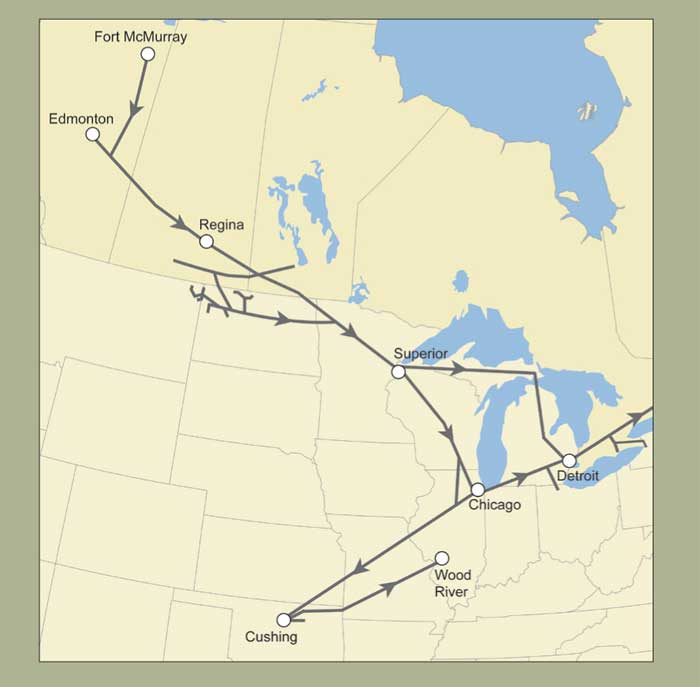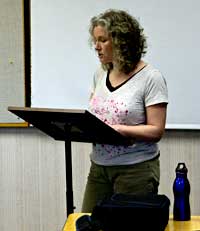EDITORIAL
Who speaks for Kitimat?
Someone has to speak for Kitimat on the Northern Gateway project.
The District of Kitimat Council no longer has a choice. It’s time to play hardball with Ottawa and Enbridge on the Northern Gateway Pipeline.
You can’t negotiate from a position of weakness.
The game of pipelines changed forever in recent weeks, when the Conservative government introduced Bill C-38, the Budget Implementation Act.
Bill C-38, which passed Second Reading on May 14, 2012 is an affront to basic democratic principles, a 425 page omnibus monster that will not permit the kind of careful consideration of major changes in Canadian society that what was once normal in a free and democratic society. The omnibus bill not only concerns the federal budget but also repeals the environmental assessment process and guts fisheries protection for the smaller spawning streams where salmon are born. By giving the federal cabinet the power to overrule the National Energy Board, the decision on the pipeline rests with just one man, Prime Minister Stephen Harper, who has made no secret that he intends to push the project through no matter how fierce the opposition to the project.
This week has seen devastating cutbacks along the west coast, to environmental monitoring and pollution control, to Coast Guard protection. It is now clear that protection of the environment along the BC coast and the lives of the mariners who sail those waters are of little importance to Ottawa, and of no importance to the war room types counting votes in Alberta and suburban ridings outside Toronto and Vancouver.
The District of Kitimat Council has voted to wait to make a decision until after the report of the Joint Review Panel, when “all information” is available.
The news this week that the Joint Review Panel decided to bypass Kitimat, that the town that is to be the terminal of the proposed pipeline is irrelevant to the process, shows more than any other move what the JRP thinks of Kitimat. Not much.
The Joint Review Panel has lost all credibility. Even if the JRP does produce a fair and honest report with valid recommendations for conditions and restrictions, it is highly unlikely that those recommendations will be fully implemented, because the final decision will be made in the Prime Minster’s Office and that decision will be build, baby, build.
Media reports in recent months have shown that Enbridge has easy access to the senior levels of the Conservative government and Enbridge lobbying preceded the changes to the Fisheries Act in Bill C-38. Enbridge walks the halls of power in Ottawa. Kitimat, on the other hand, counts for little, as the JRP schedule clearly shows.
So, for example, even if the Joint Review Panel recommends strict conditions on the pipeline to insure the safety of Kitimat’s water supply, and if Enbridge doesn’t like those conditions, there is no guarantee that Harper and the cabinet will implement those recommendations. That would leave the District of Kitimat holding the water barrel for several years.
(One of the many reasons, it seems, that the JRP wants to have all the northwest hearings is in Prince Rupert is so the high-priced energy lawyers from Calgary can have comfortable accommodation. So, if any protests from the District and the Haisla Nation are successful and there actually are final hearings in Kitimat, perhaps the District could arrange for the lawyers to camp in Radley Park, so they can actually grasp the realities of living in Kitimat by the Kitimat River.)
The District of Kitimat Council has a duty to make sure that this region is protected.
So what does this mean?
“Armed neutrality”
It is now too late for the District Council to take a position for or against the pipeline. It no longer matters whether Mayor and Councillors support the pipeline, are sitting on the fence or oppose the pipeline. Bill C-38 has made the decision for the Council.
Council must assume that Stephen Harper will impose the pipeline on Kitimat and will impose conditions that could be determinable to the District in favour of Alberta and Enbridge.
From now on Council must unify and work to protect the District from Stephen Harper. The Council must make sure that the District is an aggressive force at any negotiating table or court battle.
That means Council should retain its position of neutrality, leaving opposition to the pipeline to others like Douglas Channel Watch. Given the growing witch hunt against the environmental movement, an official position of neutrality is negotiating from a position of strength and protects the District from any accusation that “radicals” are distorting the District’s position.
In international affairs, countries like Switzerland and Sweden are neutral, robustly neutral. Both Switzerland and Sweden practice what is called “armed neutrality.”
“Armed neutrality” means that Kitimat Council can no longer continue its current wishy-washy neutrality, arguing over the nuances of words in letters to the Joint Review Panel and Enbridge. To protect Kitimat, Council must adopt its own policy of “armed neutrality,” an aggressive stance that represents the entire community, both opponents and supporters of the pipeline.
So what now?
Professional advice
The announcement this week that Shell is planning to build a liquified natural gas facility in Kitimat, in combination with the KMLNG and BC LNG projects plus Enbridge, means it is vital for the District to have independent, professional advice on energy issues.
The District must immediately start paying much closer attention to the all the relevant documents that are filed with the Joint Review Panel. The District Council and staff must have their own independent advisers rather than juggling the views of Douglas Channel Watch and Enbridge and hoping for the best. That means hiring more professionals to supplement current staff that will understand the technicalities of both the Enbridge pipeline and the LNG projects; staff who can advise the senior administration and Council about how to proceed where the issues of the pipeline construction, terminal construction and management of the terminal come under municipal jurisdiction or could adversely affect the municipality.
That takes money, even though money is tight, Council must budget for that staff. When it comes to negotiating factors within the responsibility of the municipality, Kitimat must be at the table at full strength.
All the way to the Supreme Court
It is now certain that after Stephen Harper orders the pipeline to go ahead, disputes over the Northern Gateway Pipeline will end up in the courts. Lawyers are already talking about the constitutional necessity to consult First Nations, that pushing the pipeline across aboriginal traditional territory will violate Rights and Title.
First Nations across British Columbia are already represented by some of the best lawyers in Canada.
Vancouver is already looking at what powers a municipality has to make sure that city is fully protected in case of a catastrophic tanker accident from the Kinder Morgan pipeline and project.
Yes, the District is wary because of the long and bitter fight over power allocation, but that is in the past. Again Bill C-38 gives the District no choice but to prepare for new legal battles, probably all the way to the Supreme Court of Canada.
The District of Kitimat must immediately budget for, seek out, retain and instruct a law firm that can advise the District on its rights and responsibilities now and in the future once the Harper government imposes the pipeline on Kitimat. As we have seen from the Joint Review and other National Energy Board hearings, the energy industry hires the best lawyers money can buy.
If Kitimat has to face those lawyers, the District can’t act like a Junior B team facing the NHL All-Stars. That law firm should be able to advise Kitimat on the constitutional issues involved and what powers a municipality has to protect the community from unwanted and unwarranted aspects of pipeline and tanker development. That law firm must also be able to participate in hardball business negotiations.
Seeking Alliances
The District must build better bridges with the Haisla Nation and find where there is common ground in the Kitimat region as Stephen Harper imposes the pipeline on the northwest. They may be arguments before the courts or with Enbridge where both the Haisla and the District of Kitimat are allies in a fight.
Stephen Harper and his government are prepared to impose the pipeline, terminals and tanker traffic on northwestern British Columbia, again no matter what local municipalities and regions say. All the environmental and Coast Guard safeguards that might have brought acceptance of the Enbridge project are being cut to the bone. That means Kitimat must also forge alliances with those municipalities and regions, again to make sure that local rights and responsibilities are fully protected once the government decides to impose the pipeline on the northwest.
It is highly likely that the constitutional consultation and Rights and Title cases on the pipeline will end up at the Supreme Court of Canada. If there are other cases, perhaps raised by Vancouver or other Lower Mainland or northern communities or even the Province of British Columbia, it may be that the Supreme Court, as it has with some cases in the past, could consolidate all the pipeline cases into one. That means Kitimat will need to be a participant in any case on the pipeline before the Supreme Court.
Unless District of Kitimat Council starts playing hardball, Stephen Harper will drive a bulldozer down bank of the Kitimat River to Douglas Channel, ignoring the council standing and watching from the hill looking over the pipeline trench.









